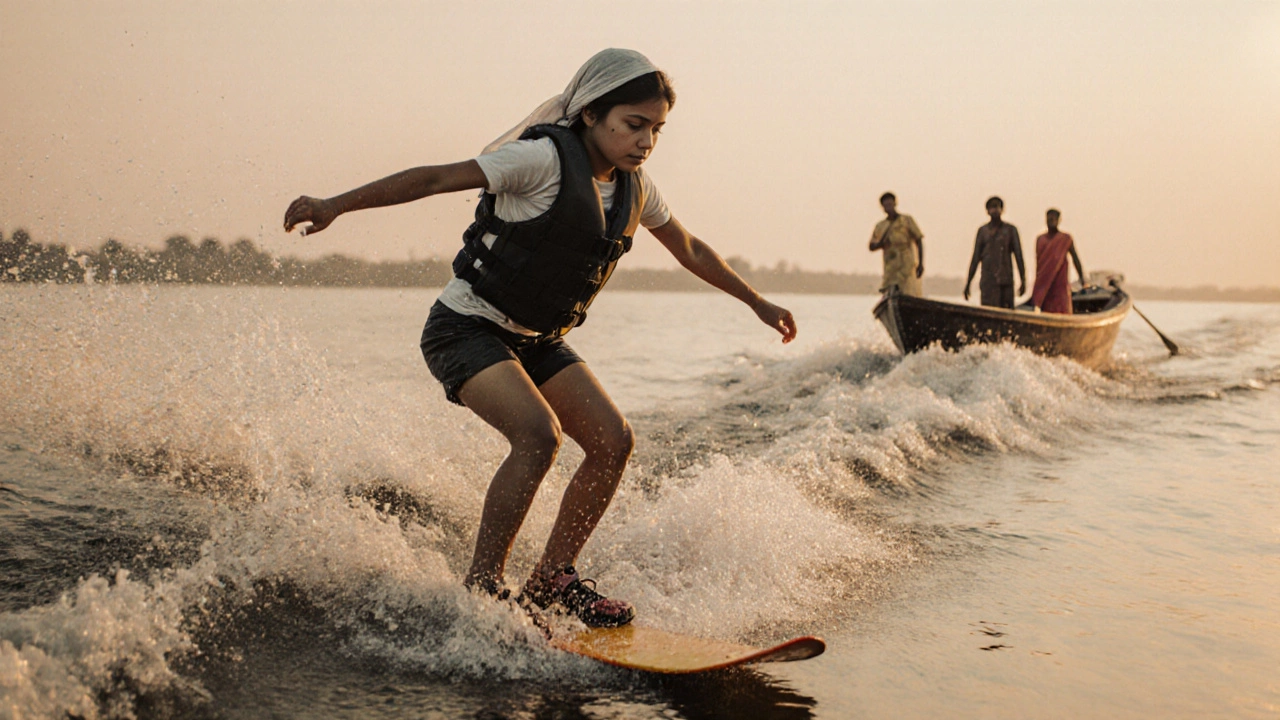What Is the Hardest Girl Sport in India?

- Nov, 15 2025
- 0 Comments
- Aaron Blackwood
Physical Endurance Estimator
Calculate Your Endurance Challenge
When people think of extreme sports in India, they often picture men scaling Himalayan peaks or racing down white-water rapids. But behind the scenes, a different kind of grit is rising-girls pushing their bodies and minds past limits most won’t even imagine. The hardest girl sport in India isn’t one you’ll see on TV. It’s not even always called a sport. It’s the quiet, brutal, daily battle of girls who climb, run, swim, and fight their way through terrain, rules, and stereotypes that weren’t built for them.
Rock Climbing in the Western Ghats: Where Strength Meets Fear
In Maharashtra’s Lonavala and Karnataka’s Jog Falls, girls as young as 14 are scaling vertical rock faces with chalked hands and zero safety nets beyond their own focus. Rock climbing isn’t just about muscle-it’s about reading the rock like a language. A single slip, a misjudged grip, and you’re falling 20 feet onto thin padding. In 2024, the Indian National Climbing Federation reported that 68% of competitive climbers under 18 are girls. That’s not luck. It’s training.
These girls wake up at 4:30 a.m. to train before school. They carry their own gear on buses because their families can’t afford transport. They climb in borrowed shoes because new ones cost more than a month’s school fees. And they do it while dealing with teachers who say, ‘Why not do yoga instead?’ or neighbors who whisper, ‘Girls shouldn’t get dirty like that.’
Trail Running in the Himalayas: Running Through Thin Air
At 14,000 feet in Uttarakhand, girls as young as 15 run 50-kilometer trails with 3,000 meters of elevation gain. This isn’t a race for medals-it’s a test of endurance against altitude sickness, freezing nights, and trails that vanish under mudslides. The Himalayan Ultra Trail, held every March, now has over 40 female participants under 20. One runner, 17-year-old Priya from Joshimath, finished third in 2024 despite breaking her toe two weeks before the race. She ran the last 12 kilometers with a splint made from bamboo and duct tape.
These girls don’t have coaches paid by sponsors. They train with older sisters, local guides, or YouTube videos on phones with cracked screens. Their fuel? Roti with peanut butter, boiled eggs, and chai. Their recovery? Sleeping on the floor, because there’s no money for a hotel. And yet, they keep going.
Water Skiing in Kerala: Fighting Waves and Doubt
On the backwaters of Alleppey, girls are learning to water ski on ropes tied to motorboats with rusted engines. No one teaches them. No one pays for them. They borrow skis from tourism operators after hours, practice at dawn when no one’s watching, and wipe out so often their knees are permanently scarred.
Water skiing in India isn’t a sport-it’s an act of rebellion. In many villages, girls aren’t allowed to wear shorts, let alone get wet in public. But these girls do. They tie their dupattas tightly, wear old t-shirts under life jackets, and laugh when they fall. One girl, 16-year-old Anjali, posted a video of herself skiing for the first time. It got 2 million views. The comments? Half praised her. Half told her to ‘cover up’ or ‘go back to cooking.’ She kept skiing.

Why Is This the Hardest?
It’s not just the physical toll. It’s the isolation. Most of these girls have no female mentors. No scholarships. No media coverage. No national team. The government spends millions on men’s cricket and kabaddi. For girls in extreme sports? Nothing.
Compare that to boys in the same towns. They get free gear, coaching, travel grants, and TV interviews. Girls? They’re told to wait until they’re married. Or that they’ll ‘lose their femininity.’ Or worse-that they’re wasting time.
But here’s the truth: the hardest girl sport in India isn’t defined by the equipment, the height, or the speed. It’s defined by the silence. It’s the girl who trains alone, gets no applause, and still shows up the next day. It’s the girl who climbs a cliff not because she wants to win, but because she needs to prove to herself that she can.
What’s Changing?
Slowly, things are shifting. NGOs like ‘Girls Who Climb’ and ‘Her Trail’ are setting up free training camps in 12 states. Local governments in Kerala and Himachal Pradesh are starting to fund girls’ adventure programs. In 2025, the Indian Olympic Association announced its first-ever women’s extreme sports scholarship-worth ₹1.5 lakh per year-for five girls under 19.
It’s not enough. But it’s a start.

Who Are These Girls?
They’re not superheroes. They’re daughters of farmers, shopkeepers, auto drivers. They carry textbooks in one hand and climbing harnesses in the other. They miss birthdays because they’re training. They cry after falls. They’re scared. But they don’t quit.
One girl from Ladakh told a reporter, ‘I don’t climb to be famous. I climb because when I’m on that rock, no one tells me what to do. I’m in charge.’
That’s the real victory.
What’s Next?
These girls aren’t waiting for permission. They’re building their own paths. Some are starting YouTube channels to teach others. Others are writing petitions to get climbing walls in public schools. A few are even applying to international competitions-without visas, without funding, without backing.
If you want to know the hardest girl sport in India, look past the medals. Look at the girl who gets up at 5 a.m., walks 8 kilometers to the cliff, climbs for three hours, walks back, does her homework by candlelight, and sleeps with bruised hands and a quiet smile.
That’s the sport no one talks about.
But it’s the one that’s changing everything.